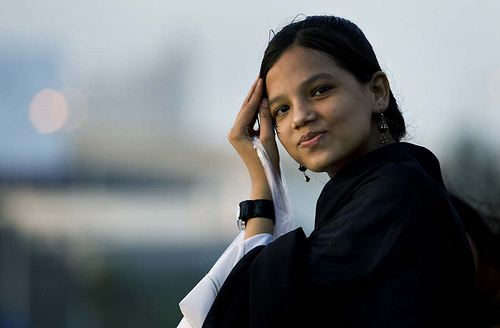 In the wake of this year’s World Population Day, the UN has called attention to the growing concern of adolescent pregnancy, and at the heart of the problem lie nations such as India that lack proper sex education.
In the wake of this year’s World Population Day, the UN has called attention to the growing concern of adolescent pregnancy, and at the heart of the problem lie nations such as India that lack proper sex education.
India harbors the highest concentration of young people on the globe. Among India’s 300 million people under the age of 25, a rate of 4 million girls under the age of 18 give birth every year. Given the context of 16 million adolescent mothers worldwide, India’s adolescent pregnancy garners a serious examination at the country’s conduct of sex education.
A startling fact reveals that only 15 percent of Indian men and women between the ages of 15 and 24 have received sex education, one that is not guaranteed to be adequate enough.
India’s unique culture of early, at times “child” marriage and the subsequent early motherhood plays a significant role in the high rate of adolescent pregnancy. A study published in 2010 shows that about one in every six adolescents aged 15-19 “had already given birth or become pregnant, and about half of India’s total fertility rate was attributable to those aged 15-24”.
Early childbearing in India often contributes to the high rate of maternal mortality, for growing teenage bodies need more nutritional support than mature bodies. Millions of unregulated, life-threatening abortions are operated on pregnant girls each year to a disproportionate ratio that succumbs to a cultural preference for boys. Adolescent pregnancy also slows down the development of the nation by concurrently hindering the future of the affected youth. In a country fighting against severe poverty, early marriage, high maternal mortality rate of adolescent girls, and the lack of sex education is no coincidence.
Manak Matiyani, an Indian social activist has commented, “Sexuality is something a lot of young people want to learn about, not only because it’s new but also because it is something that is not talked about.”
Both attempts to launch a sex education program, each in 1999 and in 2005, have failed due to political dispute over the educational material. In 2007, some of the largest states of India— Gujarat, Madhya Pradesh, Maharashtra, Karnataka, Rajasthan, Kerala, Chhattisgarh and Goa —had altogether banned sex education in time with the federal government’s cease of support.
There has been some improvement in the recent years with rising welfare programs and the availability of contraception. Additionally, a new and improved sex education program is along the way. Yet, a negative prejudice on sex education is still prevalent throughout the nation.
Experts suggest starting from the bottom of the problem by tackling the socio-cultural taboo on sex education. What the country needs is a program that “acknowledges the changing sexual landscape, parents accept that their children must know about safe sex, even if they are unwilling to communicate with their children [on the subject], and supplies and information are available to young people,” as mentioned by Dr. Shireen Jejeebhoy of the Population Council in India.
Creative Commons Love: Steve Evans on Flickr.com
















